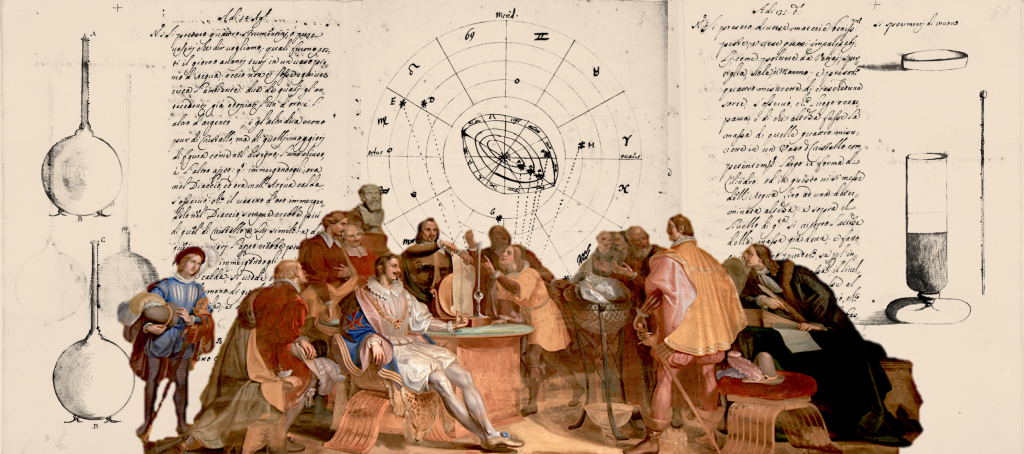
The Accademia del Cimento in Florence:
tracing the roots of the European scientific enterprise
The Accademia del Cimento (Florence) is the first European society to put experimentation at the core of scientific activity and to be supported by a public power. It lasted only ten years (1657-1667), the same years that saw the establishment of societies of greater fame and longevity such as the Royal Society and the Académie Royale des Sciences. The copious amount of records – most still unpublished – left by its members casts new light onto the process of establishment of scientific societies in Europe, on the emergence of a shared scientific discourse, and its normalisation. It also clarifies the “viral” aspect of some experiments as well as the dynamics of competition, imitation and (self-) censorship from which these institutional and scientific endeavours originated.
This project analyses for the first time in its entirety the extensive corpus of unpublished documents (ca. 15,000 papers), descriptions of experiments and thousands of epistolary exchanges between members of the Cimento and scholars throughout Europe. By looking at the sources in their entirety, it aims at systematically connecting the strictly experimental, theoretical and philosophical aspects of the Accademia with its intellectual history. The research analyses the hundreds of experiments designed and conducted by the members, without losing sight of the specific context in which they were produced and disseminated. It will reassess the Cimento’s contribution to the development of a scientific lexicon and the materiality of its work, which was heavily reliant on the design and use of scientific instruments. The substantive body of correspondence – neglected by historians so far – uncovers members’ aims and philosophical concerns, (self-) censorship mechanisms as well as the Cimento’s ties with scholars in the founding process of other famous academies.
This research will thus provide new insights into the origin of scientific institutions in the Early Modern period.
Research strands
A. The Cimento and Its Experiments
The Saggi di Naturali Esperienze (1667) collects only a minor part of the experiments carried out by the Cimento academicians (only 12 groups of experiments vs. 49 manuscripts available today). A lot of the activity of the Accademia is therefore not recorded in the Saggi. In order to analyse the entirety of its academic activity it is then necessary to study the huge amount of experiments recorded in diaries and manuscripts. During the ten years of its activity, the Cimento carried out hundreds of experiments: the Diaries list more than 600 academic sessions, and at least one or more experiments was carried out during each meeting. The objects of such experiments were varied: some were quite ordinary, others more significant; some are worthy of attention because they reveal the natural philosophical concerns of their proponents. Moreover, of great significance to us are also the experiments that did not succeed. In general, the entirety of the experiments carried out in the Cimento can be divided into 4 main groups (each representing 20-30% of the total), which will constitute the focus research areas of the first research strand: Pneumatics, Thermology, Other physics experiments (mechanics, hydrostatics, electrostatics, magnetism, chemistry…), Peripheral activities (Meteorology, Natural Sciences, Astronomy).
B. The Cimento and intellectual history
Aside from the experiments, it is crucial to consider the Cimento’s history in context. To that end, particular attention is devoted to the censorship (and especially self-censorship) mechanisms that characterised the life of the Cimento; to its significant network of correspondents, and to the contacts the members and the Prince established with famous European scholars and with the members and future members of the budding and more long-standing scientific societies in Europe; to the contribution of the Accademia to the establishment of a scientific vocabulary (e.g. with the collaboration to the third edition of the Vocabolario della Crusca), and to the material nature of the work carried out in the Cimento, which was heavily reliant on the creation and use of scientific instruments.
C. Design and development of data science techniques for document corpus analysis
P.I. Prof. Stefano Montanelli
D. Historia as an epistemic genre and the revival and edition of classical texts within the first scientific academy in early-modern Europe
P.I. Prof. Laura Mecella